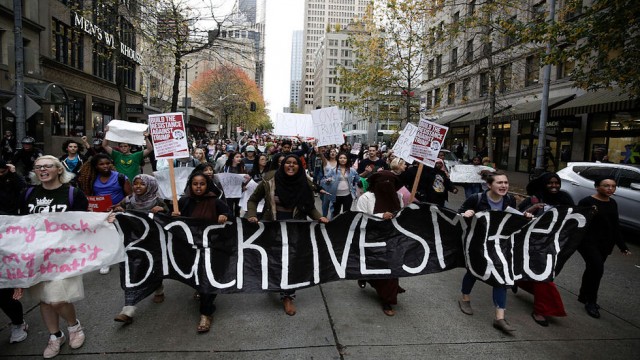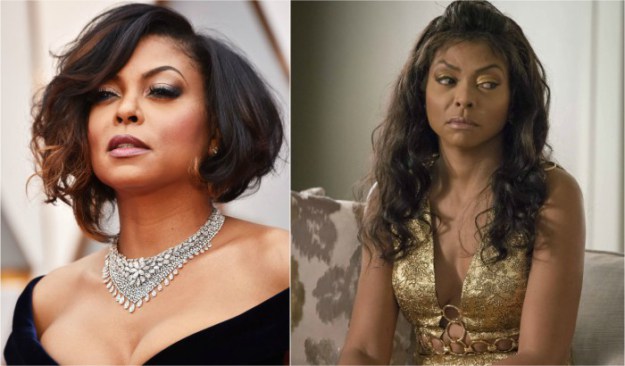
BY LIZ REICH, OPINION CONTRIBUTOR
Despite insistence that it’s not a “moment but a movement,” national attention to the Black Lives Matter organization has faded.
Nonetheless, as a scholar of black representation and political movements, it’s clear to me that if we’re worried about how to create social and political change, we must turn back to Black Lives Matter and its model of organizing.
With its roots in queer feminism and black internationalism, the organization continues to offer a model for struggle we cannot afford to ignore: not only a refusal of the status quo and a clear set of demands for change, but also ideology and action that promises to be something altogether different from another civil rights movement.
Black Lives Matter began online after the 2012 killing of Trayvon Martin and blossomed into a real-time organization in the wake of the 2014 police murder of Mike Brown.
And today, according to a recent study, it has the support of more than 40 percent of Americans. #BlackLivesMatter is no ordinary group of protesters.
Journalist Marc Lamont Hill, who has charted the organization’s rise, writes of Black Lives Matter and network of allies, “Pushing aside civil rights-era orthodoxies, these groups have embraced queer, trans, female, and shared leadership, rejected rigid respectability politics, and resisted (to varying degrees of success) co-optation by the dominant power structure.”
In so doing, they have practiced an inclusiveness, what its founders have called an “intersectionality,” and a protective indeterminacy, that is urgently necessary for any political success in the coming years of the Trump presidency.
Intersectionality for #BlackLivesMatter is not just a matter of making sure a woman’s march reflects all women, for instance, and not just those with pink “pussies” (but also brown or trans women) or the folks who can afford to attend such a march (like working class or poor women); it is also a radical refusal to pursue methods or goals that leave behind large swaths of Black America.
As scholar Keenanga Yamhatta-Taylor points out in “From #BlackLivesMatter to Black Liberation,” as a woman-founded organization with critical distance from more mainstream movements, #BlackLivesMatter has also “made a much more deliberate intervention to expose police brutality as part of a much larger system of oppression in the lives of all Black working-class and poor people” and, in so doing, has set its sight on broader goals than those of centralized national organizations like the NAACP with ties to government-backed funders.
Such breadth is clear in its mission statement and its policy demands, which insist not only on reparations but also ground-up change through the dismantling of the police apparatus itself.
Indeed, it’s #BlackLivesMatter’s wide-ranging vision, along with its intersectionality and its insistence that its efforts reflect its diverse and often locally, rather than nationally, organized constituents, that have set #BlackLivesMatter apart from both former and current civil rights movement organizations.
To be sure, today the assaults on Black life come not only in the form of police violence – or even the resurgence of a discourse of hate directed at Mike Brown, whose spectral image is again back in the news.
Trump’s government’s defunding of the NEH will affect Black artists; climate change and the government’s dismantling of the EPA will disproportionately affect Black children, who often live in more polluted and environmentally fragile neighborhoods; and the proposed increases in military spending will result in an increasingly militarized nation, again disproportionately affecting Black Americans, who have repeatedly suffered at the hands of the national guard and militarized police. And so it is only a movement with a deep understanding of how racial oppression works systemically, how it reaches out across branches of the government, social structures and institutions, that can help us fight against the violence this government is wreaking – not only on our most vulnerable citizens, but on us all.
Instead of arguing about the goals or inclusiveness of the Women’s March or the general strike – as many of us have over the past months – or planning interest-group event after interest-group event (the Scientist’s March, for instance), we should all join Black Lives Matter, find our local chapters, and work to revitalize its visionary protests, which serve not only what scholar Robin D. G. Kelley has called the “freedom dreams” of Black America, but the hopes of all of us that someday, somehow, the government will work to better our lives.
Liz Reich, Ph.D., is an assistant professor of film studies at Connecticut College, where she teaches and writes about race and cinema. She is author of “Militant Visions: Black Soldiers, Internationalism, and the Transformation of American Cinema,” and is a Public Voices fellow.










